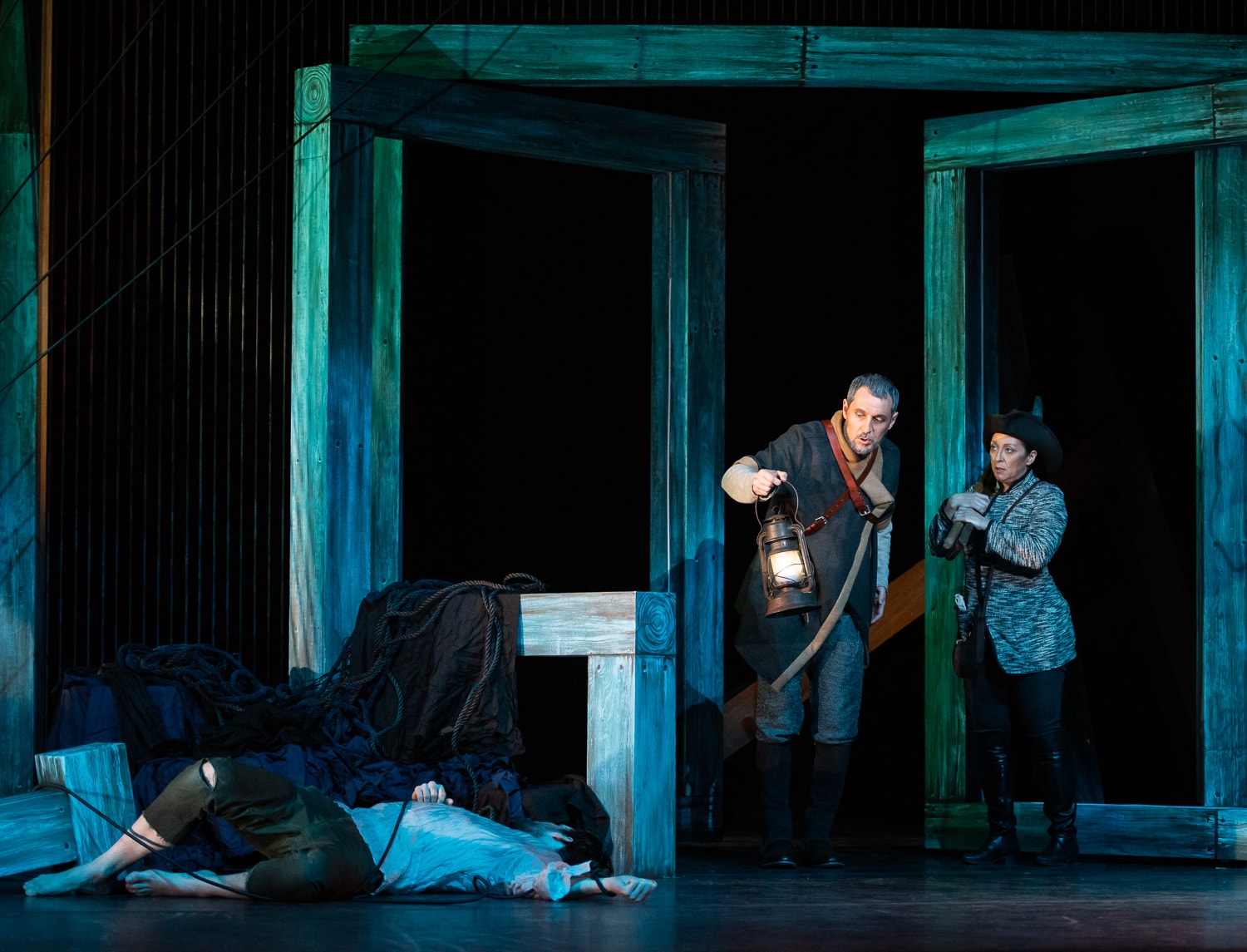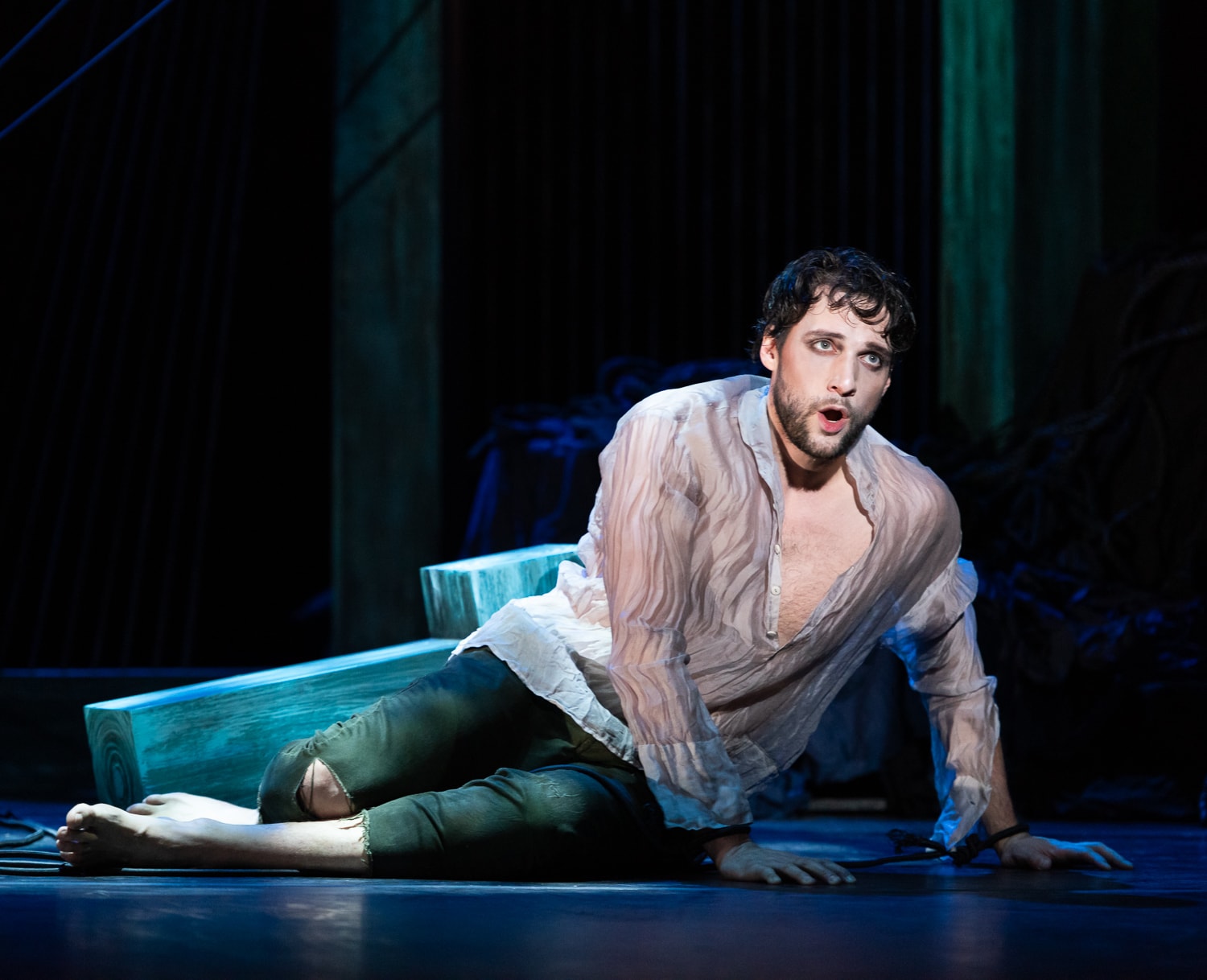Thanks in part to the bold addition of a missing tenor aria, Opera Lafayette’s elegant production of Ludwig van Beethoven’s Leonore (1805), last night at The Kennedy Center’s Eisenhower Theater, marked the successful culmination of the company’s Leonore Project, an investigation of the musical trail leading up to the creation of Beethoven’s only opera, Fidelio.

The so-called “rescue opera” where one member of a married couple must save the other from an exterior, existential threat is a genre unto itself, but several rescues were afoot in the company’s project. The first is central to the story’s plot. Disguised as a man, Leonore (soprano Nathalie Paulin) infiltrates the lives of Rocco (baritone Stephen Hegedus) and his daughter, Marzelline (soprano Pascale Beaudin), who unwittingly lead her to her imprisoned husband, Florestan (tenor Jean-Michel Richer) whom she intends to free from the terror of his captor Pizarro (bass-baritone Matthew Scollin), and ultimately does with help from the benevolent Don Fernando (bass-baritone Alexandre Sylvestre).
The depiction of this mission as performed by the company led by OL founder and artistic director Ryan Brown, was consummate. OL is a leader in works performed on period instruments. Ordinarily, there are 33 in the pit, but for this performance, 11 were added to meet Beethoven’s specifications. Typically, I find period instrumentation takes a couple of minutes of listening before I am accustomed to the thinner sounds of the brass or sometimes duller sounds of the timpani, among other quirks, and this performance proved no exception. Once acclimated, however, I found Brown’s tempi were even throughout, and every singer and instrumentalist blended effortlessly with the whole. The effect was a confident, sophisticated production made all the more so by design elements that were never under- nor overstated.
Brown’s confidence was in part, I suspect, because he is every bit an historian as he is a musician and conductor. The raison d’etre for OL is interpretive history, after all, focused as it is on forgotten works primarily from the 18th Century. With this project, in this 250th anniversary year of Beethoven’s birth, Brown sought to place Fidelio in the larger context of 18th Century French opera trends, especially those of the French Revolution. As detailed in the program notes, this meant Brown was involved in exhaustive research of virtually every note the composer wrote as he wrote and edited his opera. How could Brown not have a solid idea of what Beethoven intended?
Another reason the production had a repertory company sort of synergism, is due to the project’s second act of rescue, namely its 2017 resurrection for Washington and New York audiences of Pierre Gavaux’s 1798 opera Léonore, ou L’Amour conjugal with a libretto by Jean-Nicolas Bouilly. Featuring virtually the same cast and crew as the Beethoven, OL’s was the first production of this dialogue opera from the French revolutionary period in more than 200 years. Because Gavaux’s work forms the basis for Beethoven’s, Brown chose to mount a production of each with as many of the same elements as possible in order to offer a comparison of the two. For posterity’s sake, both versions are available on DVD from the Naxos label.
[Did you know? DC Theater Arts is currently featured as one of the Top 30 Washington DC Blogs and Websites on Feedspot!]
Beethoven used the same story as Gavaux’s for Fidelio, but with a reworked libretto by Joseph Sonnleithner. However, before there was Fidelio, Beethoven composed two other iterations of the work. It was somewhere in the process of redrafting these two versions, which Beethoven preferred to be called Leonore but was overruled by impresarios, that Florestan’s aria was lost to history. This is where the third and perhaps most important rescue performed in this entire project takes place: last night’s performance marked the debut of noted musicologist, composer, and conductor Will Crutchfield’s reimagining of what Beethoven intended his imprisoned hero to sing.

In extensive program notes, including a reprint of the aria’s notation, Crutchfield describes in fascinating detail the musical sleuthing he used to arrive at his final composition, much of which is based on Beethoven’s own sketches of a top line and an original F Major obbligato flute solo. Key to what Crutchfield saw as the emotional impetus for the aria, was his discovery of Beethoven’s original sketch for the seemingly doomed Florestan’s ecstatic memories of happier times with his wife before his musical line dissolves into anxious tones, as he wonders if he has done the right thing by publicly criticizing Pizarro, which is why he has been imprisoned.
Crutchfield’s aria is a slightly restrained, but still elegantly rendered. Florestan’s fears and self-recriminations are wrapped within the hopeful strains of solo flute and clarinet before arpeggiated violins reinforce the anxiety of the moment. The insertion of Crutchfield’s lines into the original score is seamless, and will surely be of serious consideration to Beethoven scholars.
Why Beethoven couldn’t leave well enough alone and decided to tear into the initial version of his only opera is complicated, but is often attributed to the length and difficulty of Beethoven’s original music and to the work being sung in German at a time when Vienna, where it was premiered, was only days into its occupation by the French-speaking Napoleon and his troops. The 1805 version was thus a commercial failure.
By the time Beethoven reworked it into the final 1814 version, the canonical Fidelio, the three acts were condensed into two, and some darker, unresolved passages such as a disconsonant recitative sung by Florestan are replaced with sunnier music indicating that all will be well. Perhaps this is because by then, Napoleon had been vanquished in Austria, and Beethoven was feeling less depressed by his once-beloved idol’s betrayal of his French revolutionary “liberté, égalité, fraternité” roots in favor of world domination, or at least continental supremacy.
Despite its darker themes of punishment, threat, and separation, Gavaux’s work is considered a comedic opera, served by the sub-plot of the young Marzelline being love-struck by the incognito Leonore, who poses as a man named Fidelio, to the consternation of her erstwhile love, Jaquino (tenor Keven Geddes).

The flirtatious banter between Beaudin’s Marzelline and Geddes’s Jaquino is charming, as is the affection between Hegedus’s Rocco and his daughter. With the exception of the American Scollin, the principal cast was entirely Canadian, as well as entirely excellent, and each seemed to have a superb command of both spoken and sung German. The chorus sounded on point, which was fortunate since some of the most gorgeous and moving music in the entire opera was given to them, particularly that for the all-male octet of prisoners released from their dungeon cell for a moment of fresh air and sunlight.
I am no expert on French comic opera, nor did I attend OL’s production of the Gavaux, and so do not lay claim to whatever nuances this side-by-side comparison yielded; however, I can say that as a former professional chorister who once sang in a lavish production of Fidelio, I much preferred this work for its austere beauty that to me was proof of how, compared to his contemporaries, Beethoven’s future-forward minimalism sounds as modern today as it must have sounded in his day.
Opera Lafayette’s Leonore (1805) was performed on Wednesday, February 26, 2020, at 7 p.m., in the Eisenhower Theater at The Kennedy Center, 2700 F St NW, Washington, DC. It will run in New York City on March 2, 2020, at 7 p.m. in The Kaye Playhouse at Hunter College, 695 Park Ave., New York City. For tickets, call 212-772-4448 or go online.
Oriol Tomas, stage direction; Laurence Mongeau, set and costume design; Rob Siler, lighting design
Updated Feb. 28 to include information about Brown’s historical rigor informing his conducting of this performance.




